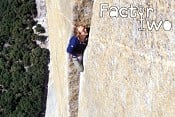In reply to mike kann: I climbed the following routes around Mt Cook: Sheila Face of Mt Cook, Central Buttress. I'ld say was TD. Difficult route finding through crevasses on the Upper Empress Shelf on the descent.
West Ridge of Mt Cook, D or D+, similar to the frendo spur (inc bivvy on low peak) but with a more difficult descent!
Porter Col, Mt Cook, D. Exposed to serac fall.
Hicks/Dampier and Dingle/Button on Mt Hicks - AD, but with either a 12 hour killer approach or a 1.5 day approach split at gardiner hut.
Couloir Route on Mt Footstool - PD, 3 hour approach to bivvy hut.
Vervoorn/White Buttress on Mt Nazomi, D+/TD. We didn't summit so can't comment for sure but it seemed straightforward.
The routes I did all compared along the lines of 1-6 = F-ED, with much longer approaches and less help available in the event of something going wrong.
Also walked up to Plateau Hut on Cook with some friends who were climbing the Linda, I don't recommend it (the walk).









